Sting – An Insane Analysis
Baseball is said to be America’s favorite pastime, but it can be argued that professional wrestling comes very close to dominating the upper tiers of Americana. Take for instance, countries like India and Saudi Arabia that generally do not care for Baseball or Football, but they are crazy about American professional wrestling. Why is this the case?
Many see pro wrestling as the answer to the lack of drama in modern sports. In ancient times, athletes strove to enter the pantheon of supernatural deities whose influence dictated the course of human history. Only the winners were celebrated; there were no prizes for second or third places, and the losers were often left lifeless and humiliated in the dust. The ancient Olympic games were held in honor of Zeus, and the rituals and ceremonies associated with this event merged the mythical with the material world. In a post-Christian society, however, this convergence faded away and feats of strength became demystified.
Pro wrestling attempts to bring back this ancient merging of the theatrical with athleticism. Larger-than-life characters overwhelm the squared circle of wrestling. Whereas the heroes of baseball, MMA, and football look like the average, jaded person who may greet you (or not) when you enter your neighborhood gym, wrestling personalities, overpowered beyond the laws of physics, look like they have jumped straight out of the panels of a comic book.
Where else would you find characters like Ric Flair, the self-proclaimed “limousine riding, jet flying, kiss-stealing, wheelin’ n’ dealin’ son of a gun;” or the 80s television-invading, red and yellow phenomenon Hulk Hogan; or the bumbling, glitter-coated storm-trooper helmet-wearing Shockmaster?
The characters of wrestling overtly defy the boundaries of real athletic competitions, as if to make the very point that an audience, robbed of all herculean dramatization, deserves better. In other words, pro wrestling is a reminder that we live and breathe by mythical figures presented to us by the prevailing culture. If the dominant priesthood shuns this duty to the mortal masses, we will mimetically look for it in underground culture. This is why we see punk rock emerge in reaction to mainstream rock, and gangster rap in reaction to mainstream hip hop.
In a certain sense, pro-wrestling is a modern rebellion against the monk Telemachus who died whilst trying to stop a gladiatorial fight in a Roman amphitheater. The Christian concern for victims gradually infected the whole world through Telemachus’ action and robbed the frenzied mob of the cathartic feeling that comes only after the wanton spilling of blood. Pro wrestling attempts to quench that primal thirst for blood through a practice known as “blading.” Wrestlers, when trying to make their performances more believable, often run a razor blade across their heads in order to bleed. When they do this, the crowd isn’t stunned or horrified, they rather cheer and hoot for more.
Here, one would think that primal human bloodlust is simply unconquerable. One would assume that is the case until he/she sees that pro wrestling violence, despite the real blood and real injuries, is entirely choreographed. The winner of a match is pre-determined by the bookers, and more often than not it is the babyface–the crowd favorite–who comes out on top. If a heel–the villain–comes out on top then it is almost solely in order to further an angle–an odd blend between a storyline and a feud. Thus, St. Telemachus, in a way, has the last laugh, and pro wrestling, as a result, is stuck between the two worlds of the pagan mythic and Christian realism.
In order to see how the hybrid world of wrestling manifests and reflects culture, we will briefly examine the career of its beloved and cherished “icon” Sting.
The Rise and Fall of the Hero
“To be the man, you gotta beat the man!” was legendary wrestler Ric Flair’s motto. Sting, the ultimate fan-favorite of WCW (World Championship Wrestling), accomplished just that at the beginning of the nineties by beating Ric Flair and becoming the world heavyweight champion.
The world of professional wrestling has had a lot of ups and downs. The downs can be outright hilarious and ridiculous, but the ups can be equally riveting. The story of Sting’s career can be considered phenomenal and certainly one of pro wrestling’s ups in all respects, and if you’re a fan of the hero’s journey and the overcoming of all odds, you’ll know exactly why.
Sting, in the late eighties and early nineties, was the ultimate “babyface;” he was the underdog whom the fans loved. His persona, or “gimmick,” was of a Californian surfer who ran out to the ring and met his opponents whilst wearing colorful face paint. He was everything that your average American kid would dream of. He’d overwhelm his opponent, no matter how big or strong they were, with a deadly combination of speed and power. He would become the world champion much to the delight of the fans, and then he’d form a successful tag-team partnership with his best friend Lex Luger (who looked like a real-life version of He-Man) and win the tag team championship.
It was a rollercoaster ride for the “Stinger,” as he came to be known by his fans; until one event changed it all. Out of nowhere, two men showed up, their names were Kevin Nash and Scott Hall; they announced themselves to WCW’s fans as the Outsiders. Their intentions were very simple: take over WCW and become the single most dominant force in the world of wrestling. The fans and commentators were outraged at the appearance of this unknown menace. It was time for the good guys to stand up.
The Outsiders were regularly inserting themselves into every event and disrupting matches. Sure enough, it was time for Sting to stand up to the villains. The Outsiders gained an enormous advantage when the iconic good guy, Hulk Hogan, the one who’d previously urged children everywhere to “say their prayers and take their vitamins,” turned on the WCW fans and joined Nash and Hall. The now three-man faction of Hogan, Nash, and Hall came to be known as the NWO—the New World Order.
The NWO drew a wedge between the friendship of Lex Luger and Sting by having an imposter in Sting’s facepaint attack Luger. The fans and Luger now thought that Sting had betrayed them all. This was the ultimate heartbreak for the pre-teen wrestling fans who had idolized this heroic underdog. The real Sting, on the other hand, was dismayed by the reaction of the fans and Lex Luger who now did not trust his best friend.
The glittering vibe of the eighties had completely faded away and the bad guys were becoming cool. The hero went into seclusion, only to reemerge as a completely different character–one who would be an antithesis to the emerging ressentiment that would dominate the nineties.
The Loss of Innocence
The character of Harvey Dent in the movie The Dark Knight made this profound comment: “You either die a hero or live long enough to become a villain.” How many times have we observed this transformation in the mythic narratives that bind real life? A key figure, whether it be in the world of politics or pop culture, would rise as a game-changer only to be brought down by multiple scandals and betrayals. Elvis Presley ended up as a nostalgic Vegas act. U2 became complete globalist sellouts. The list goes on and on. The hero’s fall is perhaps best exemplified in ancient mythology. One glaring example is Oedipus Rex who would outwit the Sphinx and become the king of Thebes, only to be dethroned and blinded when it became known that he had murdered his father and took as his queen his very own mother.
Anthropologist René Girard observed that, in ancient societies, the masses would often end up worshipping the one who had been sacrificed to appease the gods. Perhaps this is an indication of why we are eager to bring down heroes today. It could very well be the case that the hero’s demise brings about a cathartic end to our pent up-envy.
The fall of the hero, for modern society, means the fall of good role models. This was all the more vivid for the pre-teen wrestling fan who had just been hoodwinked into believing that their beloved wrestling hero turned into a back-stabbing villain. Then, there are the other fans–the edgier ones–who were sick to death of the eighties’ heavy-handed approach to portraying good guys versus bad guys. These would end up buying a lot of NWO t-shirts.
Good guys versus bad guys dominated the American myths of the eighties. Rocky Balboa’s toughest foe ended up being the Soviet giant Ivan Drago. Rambo would redeem himself by rescuing American PoWs and single-handedly winning the sequel to the Vietnam war. With the fall of the Soviet Union, America had lost its mimetic rival, both politically and culturally. Gone were the hopeful anthems that blazed from a trucker’s radio. In its place came the angsty and dysfunctional sounds of Kurt Cobain and Tupac Shakur. All of a sudden, it became impossible to market third-world “terrorists” and drug cartels as America’s ultimate foes. The real enemy now was “the man”–the puppeteers in the shadows who were pulling all the strings.
No longer could there be an unanimous decision on an external enemy. The fall of the Soviet Union, much like the fall of the Third Reich, was supposed to have heralded in an era of lasting peace and harmony. But no peace or harmony came. What followed was more conflict and more unrest. What followed was President Bush’s declaration of a “New World Order.” Now disenchanted America started wondering quietly, if not openly, if they themselves were the baddies. It is in this cultural shift that the NWO faction was introduced.
Hulk Hogan, the one-time darling of the wrestling crowd, but also notorious in real life for his backstage shenanigans, would let his mask slip as the leader of the NWO. He would now strut to the ring to the tune of Voodoo Child, accompanied by countless bodyguards, making his intention clear that he would do what he wanted and how he wanted; and he would hold onto that power by doing whatever it took. He was, in many ways, the wrestling parody of real world power elites, and quite ironically, his theatrical role was being played out under the umbrella of media mogul Ted Turner.
The role of “Hollywood” Hogan was in many ways the world of real-world politics bleeding into the cartoonish world of pro wrestling. The crowd loved him, and why wouldn’t they? As politics began to unravel and politicians began to be exposed for the maniacal grandeur-hunting control freaks that they are, the fans of WCW, upon seeing Hogan, accepted their role as the cheerleaders of their favorite politician. They loved Hogan because he was at least “honest,” something that real-world politicians could never be. And as all of this was being unraveled inside arenas, a mysterious pale-faced figure stood in the rafters, observing silently.
Batman Becomes Joker
The character of Sting would reemerge, but with a different look. Gone was the colorful face paint. He was now a character that looked very similar to Brandon Lee’s depiction of the antihero “Crow.” (Borden would later talk about how he borrowed the Crow’s appearance at the recommendation of the late Scott Hall.) Sting would now rappel down to the ring and confront Hogan in an almost mime-like appearance.* He would wear the same colors as Hogan’s–black and white–but his physique was the exact opposite. Whereas Hogan was muscular and tanned, Sting was pale and borderline thin. It was like Bizarro confronting Superman in a manner as if to reveal the skeletons inside the superhero’s closet.
Why in the manner of a mime, one might ask? It shouldn’t be too hard to figure this out, especially in a time like ours. Presidential candidates can’t remember the names of cities or countries. Presidents utter nonsensical gibberish during speeches and stumble in front of the whole world. Actors slap each other publicly at award ceremonies. World leaders taunt each other on Twitter while thousands of innocents die in places like Syria and Ukraine. As politics become more and more cartoonish, anonymous users on the internet depict these increasing absurdities through memes with the caption “Clown World.” The cultural and political landscape has already been spiked with lies and deceit, so why not revel and highlight how big a joke all of it really is?
Steve Borden, the man behind the Sting face paint, stayed completely silent as he went to war against the NWO every week. Borden was going through his inner demons around this time—demons such as substance abuse and infidelity. Eric Bischoff, one of the creative heads at WCW at that time, remarked: “He didn’t really talk, and he didn’t really engage with anybody. Well, that wasn’t just the character. That was what was really going on with Steve Borden.” The similarity with the Crow very obviously ended with the face paint. Brandon Lee’s character spoke a lot as he stalked and taunted his enemies. Sting, on the other hand, spoke not a single word in the buildup to the inevitable clash with Hogan. It was one of those rare occasions when reality and art blurred into each other.
The World Is a Wrestling Ring
Perhaps Borden would not have been so effective as the Sting character had he not been wrestling inside another ring–one that stayed hidden from the camera. In defeating Hogan through blatant mimesis, as is the true nature of the mime act, Sting became the embodiment of a generation who had grown disillusioned with the dialectical struggles of our day. In Sting’s career, we see a post-pagan, post-Christian myth that is unlike any other, and one that is born out of St. Telemachus’ defiance of gladiatorial games. Both Hogan’s heel turn and Sting’s return showed that the hero’s journey was now to be redefined from stories of might to existential stories about human power at the crossroads of history.
It is very easy to dismiss a wrestling angle as something crude, something that appeals to the lowest common denominator, but perhaps we need to take a look at art that isn’t made by artists for once; we’re all well aware that artists are often out of touch with reality, and a lot of them are in love with themselves and, therefore, unable to convey any sense of meaning.
Unlike avant-garde artists, pro wrestling writers and performers are actual swimmers in the ocean of culture. What they put out can often bomb and be literally jeered out of arenas. But when the ideas resonate, as they did with Sting’s character arc, they can convey a lot of truths about the state of culture. Sting’s feud with Hogan reveals a deep mistrust and open mockery of the power dynamics of America. Audiences stopped caring about the age-old stories of good guys vs. bad guys, and they realized that America’s biggest villains were Americans themselves. When Republicans are in power, Democrats claim victimhood, and when Democrats are in power, Republicans claim that America is occupied.
In the 1980s and early 1990s, American fans loved to hate foreign characters like Iron Sheikh and Nikolai Volkoff, and they would lose their minds when the American hero Hulk Hogan would beat the anti-American antagonists. Yet Hogan himself would later become the villain—wrestling’s George W. Bush—in Sting’s story. In the 2000s, a foreign character like Muhammad Hassan would be confronted by chants of “USA, USA,” yet fans knew that Hassan’s promos on discrimination and racial prejudices, even if delivered from a villain’s perspective, were true. The line between myth and reality has gotten blurred to the point where Hassan today is revered by wrestling fandom.
The villains today are the ones in hero costumes. Dwayne Johnson and John Cena were once booed out of arenas because they appeared to be pretentious in their hero roles. In hindsight, this proved to be somewhat foreshadowing as both Johnson and Cena would prove themselves to be utter conformists. Contrast that to when WCW writers in 1999 attempted to turn Sting into a villain. The fans didn’t care and cheered for him anyway. Why?
In a post-Christian society, people are increasingly aware of the deceptive nature of power. This is why politically incorrect comedians are so popular. This is why a movie like Joker—a sympathetic take on a comic book supervillain—became a smash hit at the box office. Clown characters are all the rage in pop culture nowadays; people love it when someone pokes fun at deceptive power structures and politically correct norms. In light of all this, how could people not like Sting?
Now that good guys vs. bad guys are slowly becoming passé, the question is: Who do we fight and who do we venerate? Are people really that hungry to fight Russia over Ukraine? Do people really honor the dementia patient that is currently residing at the White House? Do people really laugh at those heavily scripted late-night comedians? Or are people waiting for Sting-like personalities to emerge and radically change the way we view the persons standing next to us? These questions terrorize us, but somewhere (probably in the corner of a locker room), and in all likelihood, a sixty-three-year-old Steve Borden whistles to himself as he prepares to hang up his wrestling boots for good.
*Credit to David Gornoski for this insight.
Buy Surit Dasgupta’s novella The Reenchanted here.

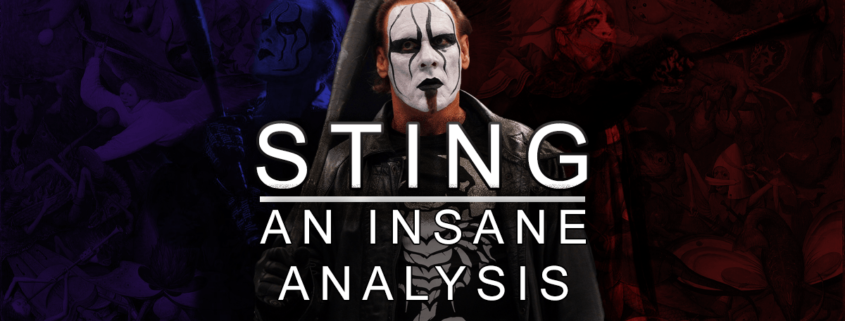
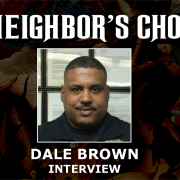


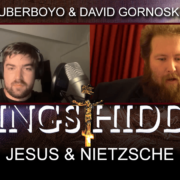

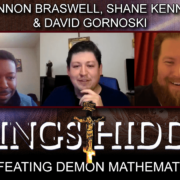
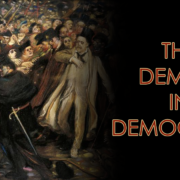

Leave a Reply
Want to join the discussion?Feel free to contribute!